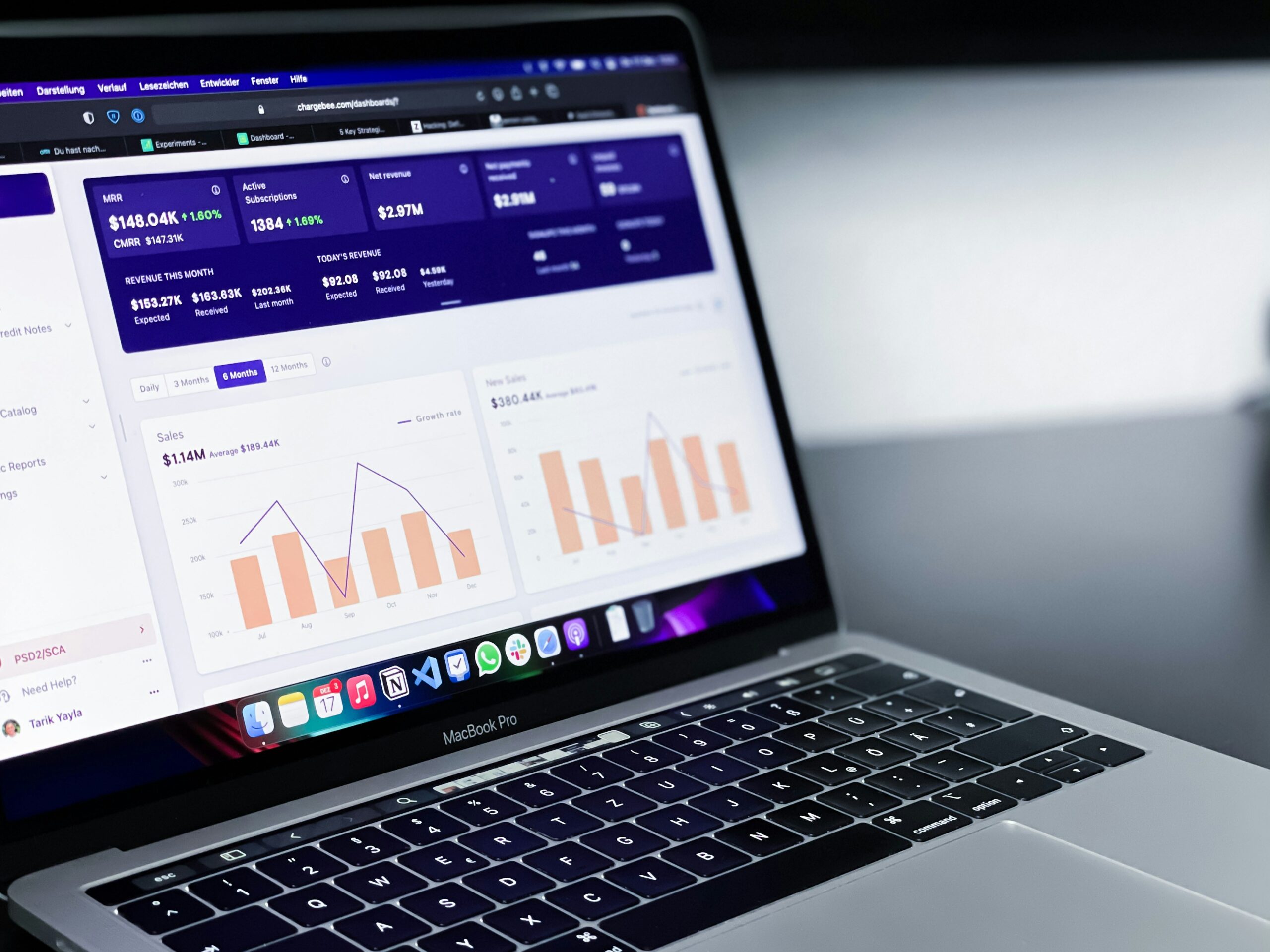Many thought leaders and service providers have trouble turning casual viewers into loyal clients. This article provides useful tips to help solve this problem. It explains how the sales funnel works in acquiring customers, shares proven techniques for each stage of the funnel and highlights tools for better management. By reading this content, you will learn strategies to improve client conversion and build strong relationships in your business. Understanding these sales funnel strategies may be key to acquiring and nurturing clients effectively.
Key Takeaways
- Sales funnels guide potential clients from awareness to purchase, optimizing customer acquisition strategies
- Tailored approaches for each funnel stage improve engagement and address client needs effectively
- Customer journey mapping enhances visibility and fosters long-term loyalty throughout the buying process
- Effective use of marketing tools streamlines outreach and enhances user experience across channels
- Regular analysis of funnel performance helps identify weaknesses and improve overall acquisition efforts
Understanding the Sales Funnel and Its Role in Customer Acquisition

The sales funnel framework serves as a roadmap in customer acquisition, guiding potential clients through various stages. It encompasses critical phases, such as awareness, consideration, and decision-making, which are essential for effective email marketing and affiliate marketing strategies. Additionally, understanding customer journey mapping enhances visibility and supports the implementation of freemium models, ensuring that prospects progress smoothly toward becoming loyal customers.
Defining the Sales Funnel Framework
The sales funnel framework is a structured approach that outlines the journey potential clients take, from first hearing about a service to making a purchase. It typically involves several stages, such as awareness, interest, and action, which help in crafting effective client acquisition strategies. For instance, utilizing organic search results can enhance visibility in the awareness stage, while streaming media can engage prospects during consideration, ultimately leading them to decision-making.
- Awareness: Introducing potential clients to the brand.
- Interest: Capturing attention through engaging content.
- Consideration: Providing valuable information to guide decisions.
- Action: Encouraging prospects to take action and make a purchase.
Phases of the Sales Funnel in Customer Acquisition
The phases of the sales funnel play a crucial role in effective customer acquisition strategies. Each stage—from awareness to action—requires tailored approaches that cater to potential clients’ needs and preferences. For instance, utilizing social media marketing can significantly enhance visibility during the awareness phase, while conducting research can provide insights on pricing strategies that attract leads. Maintaining strong lead management practices throughout the funnel ensures continued engagement and aids in fostering customer retention as prospects move toward making a purchase decision:
- Awareness: Utilizing social media marketing to capture interest.
- Interest: Conducting research to understand pricing strategies.
- Consideration: Providing resources that support informed decisions.
- Action: Implementing solid lead management to encourage purchases.
Importance of Customer Journey Mapping
Customer journey mapping is crucial for enhancing the overall customer experience, as it allows businesses to understand the paths potential clients take from initial engagement to loyalty. By identifying touchpoints, brands can optimize their search engine marketing efforts and increase customer engagement at every stage of the funnel. According to insights from Forbes, companies that prioritize mapping their customer journeys effectively boost retention and loyalty, leading to a more substantial return on investment.
- Awareness: Capturing the attention of prospective clients.
- Interest: Creating engaging content to inform and entice.
- Consideration: Offering valuable insights to support decision-making.
- Action: Implementing strategies that encourage purchases.
Proven Techniques for Each Stage of the Sales Funnel
Generating awareness through effective marketing strategies captures potential customers’ attention and establishes foundational leadership in the market. Engaging prospects during the consideration phase through compelling content marketing helps to communicate a strong value proposition. Optimizing conversion processes for higher sales ensures a smooth transition to action, while retaining customers after the purchase fosters long-term loyalty. Each of these areas is essential for mastering customer acquisition.
Generating Awareness Through Effective Marketing Strategies
Generating awareness is crucial in attracting potential customers and establishing a strong presence in the market. An effective marketing strategy might include using billboards in high-traffic areas to capture attention or employing digital campaigns that focus on personalization to resonate with specific audience segments. Including a clear call to action in all marketing efforts also encourages engagement, guiding prospects toward further interaction and ultimately aiding procurement decisions.
Engaging Potential Customers During the Consideration Phase
Engaging potential customers during the consideration phase is essential for reducing customer attrition and driving demand. This can be achieved through targeted email marketing campaigns that encourage the sharing of an email address in exchange for valuable information or exclusive offers. Utilizing relevant advertising campaigns that highlight customer benefits can effectively inform prospects about what sets a brand apart, ultimately helping them make informed decisions before making a purchase.
Optimizing Conversion Processes for Higher Sales
Optimizing conversion processes is essential for boosting sales and ensuring customer satisfaction. A seamless onboarding experience can significantly enhance how new clients perceive a brand, setting the stage for long-term loyalty. Omnichannel strategies in online advertising can effectively reach potential customers across various platforms, while referral marketing encourages existing customers to share their positive experiences, driving new leads through trusted recommendations.
Retaining Customers After the Purchase
Retaining customers after the purchase is fundamental for boosting customer lifetime value and increasing profit margins. Providing ongoing value through resources like an informative ebook can keep customers engaged and satisfied, ultimately influencing their future behavior and loyalty. Additionally, utilizing social media to share updates, offer exclusive promotions, or gather feedback ensures that clients feel valued and connected to the brand, reinforcing their decision to choose the service initially.
Implementing Data-Driven Insights to Enhance the Sales Funnel

Utilizing analytics helps thought leaders identify weaknesses in their sales funnel, allowing for targeted improvements. A/B testing can boost consumer engagement and conversion rates by tailoring content to specific personas. Additionally, leveraging customer feedback ensures continuous refinement, creating a more effective experience for leads and reinforcing their connection to newsletters and other offerings.
Utilizing Analytics to Identify Funnel Weaknesses
Utilizing analytics to identify funnel weaknesses is essential for enhancing customer acquisition strategies. By examining data metrics, marketers can pinpoint stages where prospects lose interest, allowing them to refine their approach. For example, measuring engagement through influencer marketing campaigns can reveal areas where credibility falls short, impacting return on investment.
| Funnel Stage | Common Weaknesses | Potential Solutions |
|---|---|---|
| Awareness | Low reach and awareness | Increase influencer marketing efforts |
| Interest | High bounce rates | Leverage targeted content |
| Consideration | Low engagement | Enhance credibility with testimonials |
| Action | High drop-off rates | Optimize conversion processes |
A/B Testing for Improved Engagement and Conversion
A/B testing proves to be a valuable tool in refining the sales funnel by promoting engagement and conversion rates among ideal customers. By systematically testing variations of content, messaging, and user interfaces, businesses can gain insights into which elements resonate most with their audience. This process leads to improved efficiency in converting prospects, ultimately decreasing the churn rate as customers find more value in the offerings that meet their preferences.
| Test Type | Description | Expected Outcome |
|---|---|---|
| Headline Variations | Testing different headlines on landing pages | Identify which headlines increase cart completion rates |
| Call to Action | Evaluating various CTAs in email campaigns | Determine which phrases drive more clicks |
| Visual Elements | Comparing images or videos used on product pages | Find visuals that enhance user engagement |
| Email Layout | Assessing different email templates | Discover layouts that sustain attention |
Leveraging Customer Feedback for Continuous Refinement
Leveraging customer feedback is essential for refining sales funnel strategies and enhancing overall customer acquisition efforts. By integrating insights from market research and measurement tools, businesses can identify gaps in their customer support and understand the factors that affect cost per action. This continuous refinement not only improves lead generation but also fosters lasting relationships with clients, ensuring that their needs are effectively met throughout the buying journey.
Innovative Tools and Technologies for Sales Funnel Management
Effective customer acquisition requires using the right tools and technologies to streamline processes and enhance engagement. CRM software allows for seamless customer relationship handling, ensuring that the target audience is nurtured effectively. Marketing automation tools help in reaching the target market efficiently, while analytics platforms enable data-driven decision-making to optimize outreach and establish social proof. Each of these tools plays a crucial role in refining strategies and improving overall acquisition efforts.
CRM Software for Seamless Customer Relationship Handling
CRM software is vital for organizations looking to improve customer relationship handling efficiently. By integrating project management software with CRM capabilities, businesses can enhance motivation among teams to follow up on leads, streamline interactions, and maintain clear communication. This effective system not only fosters customer engagement but also encourages word of mouth as satisfied clients share their positive experiences, further aiding new customer acquisition through established shopping cart functionalities.
| Feature | Benefit | Impact on Customer Acquisition |
|---|---|---|
| Integration | Combines sales and project management tools | Improves organizational efficiency |
| Motivation Tracking | Monitors team performance | Enhances employee engagement |
| Customer Feedback | Gathers insights from past clients | Boosts word of mouth |
| Shopping Cart Features | Streamlines purchase process | Increases conversion rates |
Marketing Automation Tools to Streamline Outreach
Marketing automation tools significantly enhance user experience by streamlining outreach efforts across various marketing channels. These innovative solutions allow businesses to create personalized communication, improving engagement during online shopping experiences. By integrating search engine optimization techniques within automated campaigns, organizations can ensure their messages reach wider audiences while maintaining efficiency in their customer acquisition strategies.
Analytics Platforms for Data-Driven Decision Making
Analytics platforms play a vital role in enhancing decision-making processes for brands striving to improve customer acquisition through effective sales funnel strategies. By conducting thorough keyword research, businesses can identify relevant terms that resonate with their audience, thus enhancing brand awareness and ensuring that marketing efforts align with the target market’s needs. Additionally, these platforms enable organizations to refine their unique proposition, especially for subscription business models, making it easier to track performance, understand customer behavior, and make data-backed decisions that drive growth.
Frequently Asked Questions About Sales Funnel Techniques and Customer Acquisition

The purpose of a sales funnel in customer acquisition is to guide potential clients through their journey, from initial awareness to making a purchase. Understanding how different stages impact strategy helps businesses refine their approaches. Tools like optimized landing pages and effective mailing list management play a key role in this process. Furthermore, measuring the effectiveness of a sales funnel allows brands to acquire customers more efficiently, ensuring their business model thrives.
What Is the Purpose of a Sales Funnel in Customer Acquisition?
The purpose of a sales funnel in customer acquisition is to systematically guide potential clients through their decision-making journey, from initial awareness to making a purchase. By understanding the various stages of this funnel, businesses can tailor their marketing efforts to address specific needs at each point, ultimately leading to higher conversion rates. For example, providing valuable content during the consideration phase can help prospects feel informed and confident in their choices, fostering loyalty and encouraging repeat business.
How Do Different Stages of the Funnel Impact Strategy?
The different stages of the sales funnel significantly shape marketing strategies aimed at customer acquisition. For instance, awareness strategies might emphasize brand visibility through targeted content, while the consideration phase requires insightful resources that address potential clients’ specific questions and needs. Understanding and adapting tactics for each stage ensures that marketers effectively engage prospects at every point, ultimately guiding them to make informed decisions and fostering long-term relationships.
What Tools Can Help Optimize a Sales Funnel?
Optimizing a sales funnel requires the right tools to streamline processes and enhance engagement. Customer Relationship Management (CRM) software simplifies tracking interactions with potential clients, allowing businesses to nurture leads effectively. Additionally, marketing automation tools help schedule campaigns and personalize outreach, ultimately improving conversion rates as they guide prospects through the buying journey.
Companies should also consider analytics platforms for insight into funnel performance: these tools enable businesses to monitor engagement metrics and identify areas for improvement. The following table outlines essential tools to optimize a sales funnel:
| Tool Type | Description | Benefit |
|---|---|---|
| CRM Software | Tracks customer interactions | Enhances lead nurturing |
| Marketing Automation | Schedules and personalizes campaigns | Improves conversion rates |
| Analytics Platforms | Monitors funnel performance | Identifies improvement areas |
How Can I Measure the Effectiveness of My Sales Funnel?
Measuring the effectiveness of a sales funnel is essential for businesses aiming to improve customer acquisition strategies. Key metrics such as conversion rates at each stage, lead engagement, and customer feedback provide insights into how well the funnel is functioning. For instance, tracking how many leads move from the consideration stage to making a purchase can help identify which areas need refinement to maximize conversions. By focusing on these analytics, businesses can make informed adjustments that enhance the overall sales funnel performance:
| Funnel Metric | Description | Importance |
|---|---|---|
| Conversion Rate | Percentage of leads that make a purchase | Indicates the effectiveness of the sales process |
| Lead Engagement | How prospects interact with content | Shows the relevance and appeal of marketing efforts |
| Customer Feedback | Insights from customers about their experience | Helps identify areas for improvement |
Conclusion
Mastering customer acquisition through effective sales funnel strategies is essential for businesses to thrive in a competitive landscape. By understanding each funnel stage—from awareness to action—marketers can tailor their approaches to meet potential clients’ needs and preferences, driving higher conversion rates. Utilizing tools such as CRM software, marketing automation, and analytics platforms empowers brands to optimize outreach and gain valuable insights. Ultimately, refining these strategies builds lasting relationships and fosters loyalty, ensuring long-term success in customer engagement and retention.






